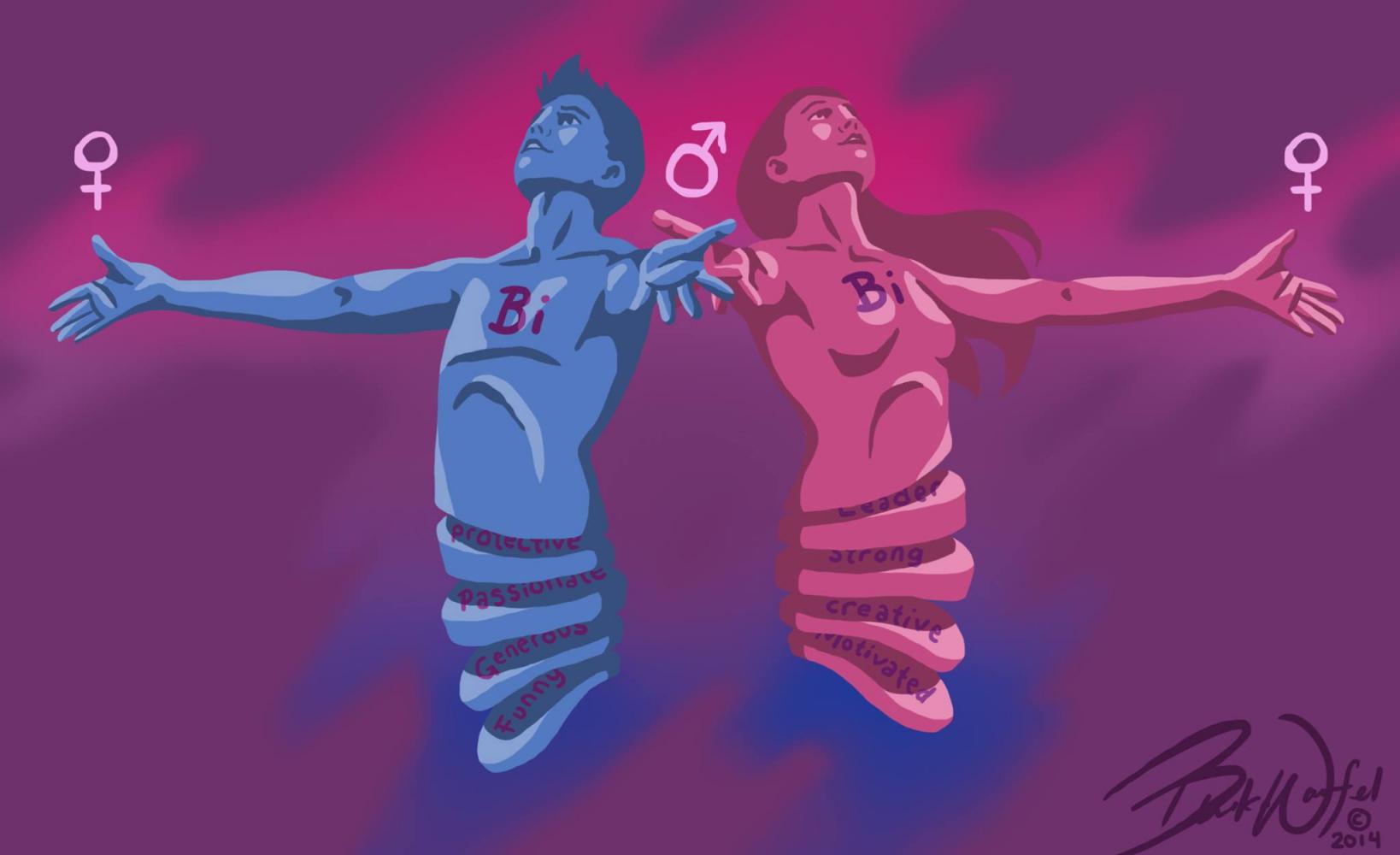The Stigmas of Being Bisexual
by Alyssa Jackson | published May. 3rd, 2014
Bisexual individuals constitute a growing and often misunderstood group in the LGBTQQIA community. Simply put, bisexual people are sexually attracted to both men and women. This should not be confused with pansexual, or people who are sexually attracted to all genders. People involved in this community are frequently stigmatized and incorrectly labeled due to a lack of understanding.
According to Henry Hinesley, staff coordinator of the Q Center at RIT, those who identify as bisexual are often accused of being unable to make up their minds. He explained that a commonly used phrase is “bi now, gay later” — that is to say, someone who states that they are bisexual may just be gradually coming out as gay, lesbian or another type of sexual orientation. “For some people that might be true,” Hinesley stated. “But it’s a very large percentage of our GLBT community [who] would consider themselves bisexual rather than either gay or lesbian.”
Darci Lane-Williams, the director for the Center for Women and Gender, agreed with Hinesley, adding that those of the bisexual community are sometimes also accused of having no moral code or being very promiscuous people. One of the most common misconceptions is that people who are bisexual are involved in a lot of group sex.
Hinesley explained that another obstacle the group faces is the process of coming out to friends and family. They often have to come out continuously or further explain their sexual preferences. Anna Aagenes, executive director of GO! (Generation Out) Athletes, explained in her article for the Huffington Post how tiring the process is. “If I wear a rainbow pin, people are most likely to assume that I am a lesbian,” Aagenes wrote, “On the other hand, if I’m marching in a pride parade with no identifying label, people are likely to assume that I am a straight ally, because I may not look like the stereotypical ‘butch’ woman who identifies as queer.”
Bisexuals may at times feel unwelcome in the gay and lesbian communities as well, according to Hinesley. “I think that politically it was the gay agenda to say that ‘we were born this way, it’s not a choice and we need to be accepted as gays and lesbians,’” he said. “I think that in some ways bisexuals complicated that. I think the fear is that straight people would say, ‘…Bisexuality proves our point, they can choose and be with either one.’”
Hinesley and Lane-Williams explained that many of these rumors and stigmas against the bisexual community are due to a lack of understanding. “I think that one thing we know about humans is that they are more comfortable with people that are like them,” Hinesley said. “If someone is identifying as something else it’s sort of troubling for people.”
Lane-Williams agreed with Hinesley, explaining that things that we may not understand are often scary to us, causing us to ostracize them. “People want to categorize people and put them in boxes,” she said. “They want to categorize them in ways that make them comfortable…You can’t really do that with any identity, whether it be sexual orientation, gender identity, racial identity, you can’t look at someone and say ‘I know who you are based on this.’”
Both Lane-Williams and Hinesley felt that until society stops trying to categorize and label people, groups along the gender and sexuality spectrum will continue to be misunderstood. “It’s out of fear that we have all these stigmas and labels,” said Lane-Williams. “Identity is so faceted and multi-layered. Folks that are gay, lesbian, bisexual, trans*, anything like that, that’s their whole identity that people put on them. That’s really only one aspect of who they are.”



